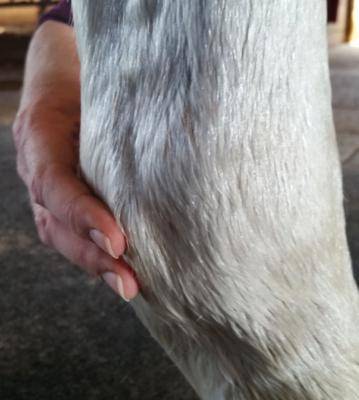Your Cart is Empty

How to Reduce the Risk of Spring Time Laminitis!

Caring for horses in the spring comes with one big challenge - the lush pastures. While horses love them, spring time pastures are often associated with laminitis. As the days lengthen, the sun tells grasses and plants to rev up photosynthesis. This increases the starches, sugars, and fructans of grasses. The cool nights of spring also increase the starches, sugars, and fructans.
These ingredients make spring grass delicious, and laminitis inducing. There’s a wide array of scientific research that links large amounts of sugar intake to laminitis risk. As the sugars enter the large colon, they are feasted up by your horse’s microbial population, which changes the pH of the large colon. The change in pH causes the intestinal wall to permeate and leak digestive toxins, which migrate to the hoof.
There is also loads of scientific evidence that links increased insulin levels to laminitis, as the insulin interferes with the soft tissue in the hoof, making it more likely to develop into laminitis.
So What Can You Do?
Have your Vet give your horse a complete physical, including bloodwork. There are specific tests available to monitor insulin levels as well as the other factors that make up the different types of metabolic conditions. Knowing if your horse has a metabolic issue can help you create a diet that is safe.
Monitor the weight of your horse. Use a tape - your eyes are deceiving! Horses that gain weight put more stress on their legs and hooves, and have an increased chance of metabolic issues.
Keep exercising your horse! This is crucial for his health, and can help you keep your horse healthy. And it’s fun!
Monitor your horse’s digital pulse daily. It takes seconds to do, and can alert you to a problem in the hoof long before lameness sets in. You can learn how to do this with the handy video, below!


Talk to your Vet about a magnesium supplement, which might help with insulin levels. Of course your horse’s entire diet needs to be evaluated, as you don’t want to add too much.
Use dry lots or sacrifice areas instead of turning out into grass.
If you must turn out on grass, use muzzles. There are dozens of styles, each with varying degrees of eating freedom. Make sure your horse can drink with one on.
Be smart about turn out to the grass - avoid high sugar times, like after a cool evening or in the heat of the afternoon. Make your turn out gradual. Your Vet can help you decide how many minutes a day to increase the turn out. There have been studies done with horses on a predictable turn out schedule, many of them know how long they will be out and therefore vacuum up as much grass as possible. Observe your horse and add a muzzle if he’s one of the vacuum types.
Call your Vet at the first sign of any trouble! This includes an increased digital pulse, heat in the hooves, difficulty turning, unwillingness to walk (especially on hard ground) and any other signs your horse is not his usual self.
If you do end up with a case of laminitis, you can use the Laminitis Kit to keep your horse's hooves cold - reducing inflammation and providing some pain relief. Learn more about the laminitis kit here!
Watch the video below for some extra pointers!

